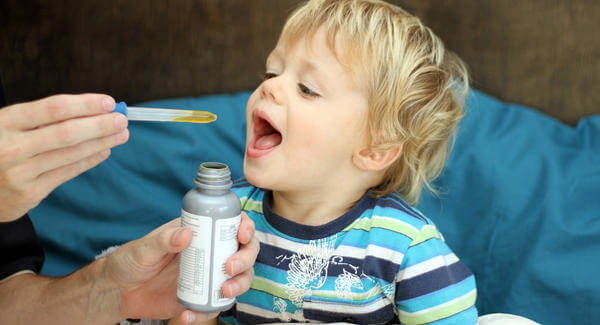How to Get a Child to Take Their Medicine?

Getting a child to take their medicine is often a tough battle. “Up! Open your mouth! Go on! Swallow it, it’s for your own good!” are just a few examples of phrases we employ to get them to take it.
Once a mother tells her child to take their medicine, the child runs all over the house, hides under the bed and sometimes ends up crying. There are only a few children who, without complaining, take their medicine the first time they are told to.
With the objective of helping you carry out this very difficult task, here are some methods that have helped numerous mothers give medicine to their children.
If you have a specific method that you use, feel free to share it with the readers of our blog.
Useful ways to get your child to take their medicine
Persuasion through information

There are mothers who have little patience and force their children to take medication. They punish them if they don’t comply or spit it out. We don’t favor this method; we prefer convincing rather than sanctioning.
In order to persuade your child to take their medicine, first explain to them what the medicine is for. Speak to them about why it’s useful and how it will help them.
A 5 or 6 year-old child is perfectly capable of understanding what you mean and will likely listen to you. Remember that ignorance leads to rejection.
Discipline
Discipline comes through teaching, making them understand the reasons they should do what you tell them to.
You can discipline your child by making the act of giving them medicine a serious one.
Do not run after them, make promises or compromises when it comes time to give them their medicine.
If you are playing when the time comes, make the child sit down calmly, instruct them to open their mouth, take the medicine and then give them a little water. After it is done, you can carry on playing.
Syringe VS Spoon

Even though a spoon is the utensil of choice when it comes to feeding children, when administering medication it is not recommended. Many mothers share this opinion.
Medications that are administered by spoon are more prone to spills.
When a child doesn’t want to take their medication, they shake their heads rigorously from side to side. Surely this has happened more than once in your own experience. This causes most of the medication to end up on the floor.
In order to avoid this, some mothers prefer the use of plastic syringes without the needle to pour all of the medication in the child’s mouth. This method prevents it from spilling.
How is it done?
In the case of tablets, we recommend putting it on a spoon and diluting it with a little water. Once it has been completely dissolved you can aspirate the liquid with the syringe until there is no medication left on the spoon.
Using this method, it is easier to administer medicine even if your child barely opens their mouth. You don’t need great aim to hit the target. This way spills are also prevented. Remember spills can alter prescribed doses.
Let taking the medicine take the back seat
Although you have to be serious about them taking their medicine, your child doesn’t need to concentrate on the act. That’s what they have you for.
Let’s take the example we used earlier: Suppose your child is playing. When it comes time to take their medicine, ask them to sit on a chair to receive it.
While doing this, we recommend talking to them about something interesting about the game they were playing. Talk to them about a new idea to for a game or about how nice you think their doll or toy looks.
The most important aspect with this method is to get them to focus on something that interests them and captures their curiosity. This way the last thing they will be thinking about is the bitter medicine they’re taking.
Getting a child to take medicine is as difficult as it can be simple. It’s all about knowing how to deal with the situation in order to make the experience bearable for them.
All cited sources were thoroughly reviewed by our team to ensure their quality, reliability, currency, and validity. The bibliography of this article was considered reliable and of academic or scientific accuracy.
- KidsHealth staff. (n.d.). Medicamentos: utilizarlos de forma segura. Kids Health. https://kidshealth.org/es/parents/medication-safety-esp.html
This text is provided for informational purposes only and does not replace consultation with a professional. If in doubt, consult your specialist.
